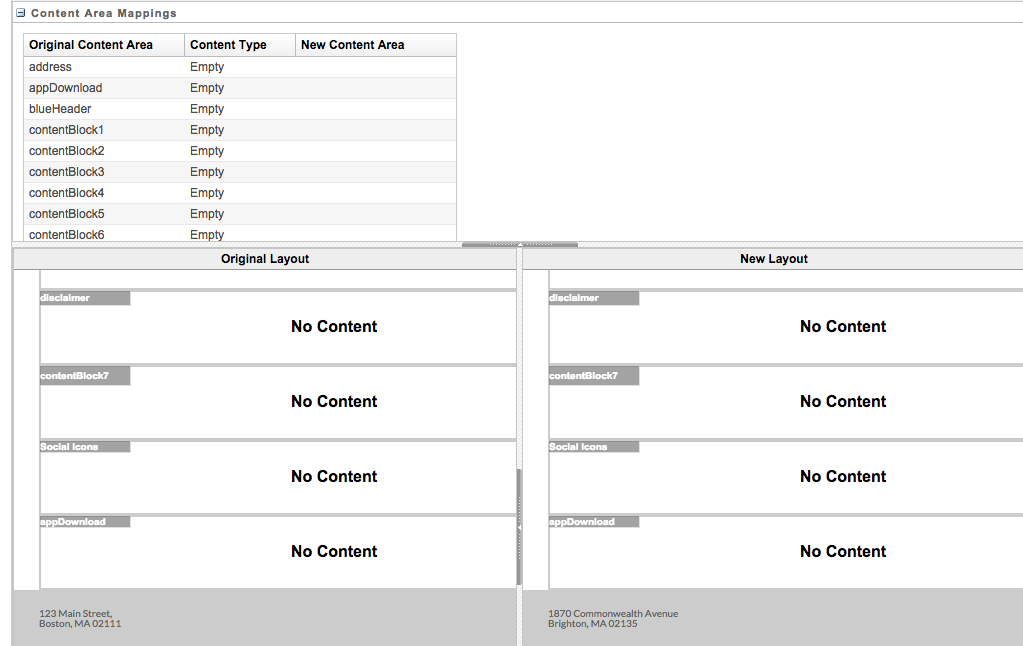So, you have several emails and you need to make one change to all of them. If you planned ahead and created a template for these emails, then you’re in luck. Updating and applying changes to templates in ExactTarget is fairly easy.
For this example, let’s update something as simple as the address in the footer.
Currently, the address is 123 Main Street, Boston, MA.
I just moved to 1870 Commonwealth Avenue, Brighton, MA, so I need to update this information.
To make the edits to your template, navigation to Content > My Templates, and locate the template you are looking to update.
*Tip: Copy the HTML into an editor (Dreamweaver, etc.) and save for a back up.
Make the changes to the template and save.
Navigate back to the email (Content > My Emails).
Go to the Properties tab:
In the Properties tab, go the bottom and select “Apply Template Changes”
Make sure the content maps correctly before accepting changes:
And you’re done! All of your template changes are now live.

Note that you will need to do this process for every email that is using the updated template – the template will not automatically update.




